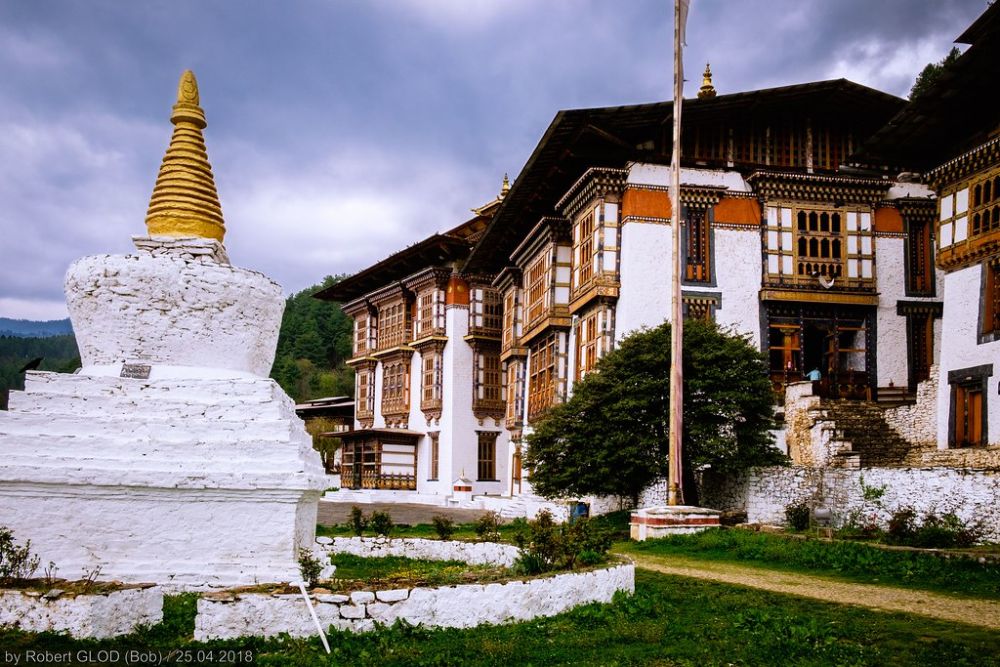

Located in the picturesque valley of Bumthang in Bhutan, Khurjey Lhakhang is one of the most ancient and sacred monasteries in the country. Its name translates to "Temple of the Imprint" and it holds a profound significance for both the local communities and international pilgrims who come to visit.
Khurjey Lhakhang's history dates back to the 8th century, making it part of the rich historical tapestry of Bhutan's spiritual journey. It is said that Guru Rinpoche, also known as Padmasambhava, the saint who introduced Buddhism to Bhutan, meditated here and left an imprint of his body on the rocks, after which the temple was named. The site consists of three main temples, with the oldest one built around the rock bearing the sacred imprint.
The complex is an outstanding example of Bhutanese architectural design, incorporating the traditional elements that characterize the country's religious structures. It is also the final resting place for the first three kings of Bhutan, adding to its importance and reverence among the Bhutanese people.
Tourism in Bhutan, including to sites like Khurjey Lhakhang, saw a structured development since its inception in 1974 when the Bhutanese Government, realizing the potential of tourism as a means of economic development, decided to open its doors to foreigners. With its policy of High Value, Low Impact tourism, Bhutan has maintained a sustainable approach to tourism to preserve its natural environment and rich cultural heritage.
Khurjey Lhakhang has been part of this tourism development as it is included in most cultural tours aimed at exploring the spiritual heartland of Bhutan. The area, particularly during festivals like the popular Bumthang Jambay Lhakhang Drup, experiences a high influx of tourists who come to witness the vibrant cultural performances and ceremonies.
In recent years, Bhutan has seen a rise in experiential and sustainable tourism, with travelers preferring to engage in activities that allow for deeper cultural immersion and minimal environmental impact. Visits to sacred sites like Khurjey Lhakhang often involve community-led tours, meditation sessions, and interactions with local monks, providing an intimate glimpse into the spiritual practices of Bhutan.
The government has also initiated projects to improve facilities and infrastructure, such as proper signage and visitor centers, ensuring a more educational and fulfilling experience for tourists. Additionally, homestays and community-run lodges have become more popular, aligning with the global trend of responsible tourism that benefits local economies and encourages cultural exchange.
Travelers wishing to visit Khurjey Lhakhang must do so as part of a prearranged tour due to Bhutan's tourism policies. Tours typically include a professional guide and are booked through registered Bhutanese tour operators. This not only provides employment for local communities but also ensures that visitors receive accurate historical and cultural context during their visit.
As with all sacred sites in Bhutan, visitors to Khurjey Lhakhang are expected to abide by local customs and dress codes, which generally means modest attire and a respectful demeanor. Photography may be restricted within certain areas of the complex to preserve the sanctity of the site.
Khurjey Lhakhang continues to be a testament to Bhutan's commitment to protecting its cultural heritage while welcoming the world to witness its unique beauty and spirituality.